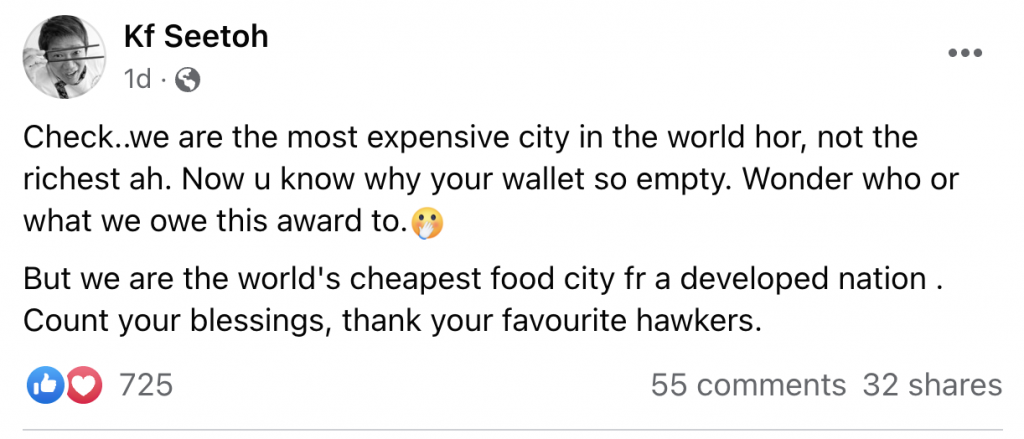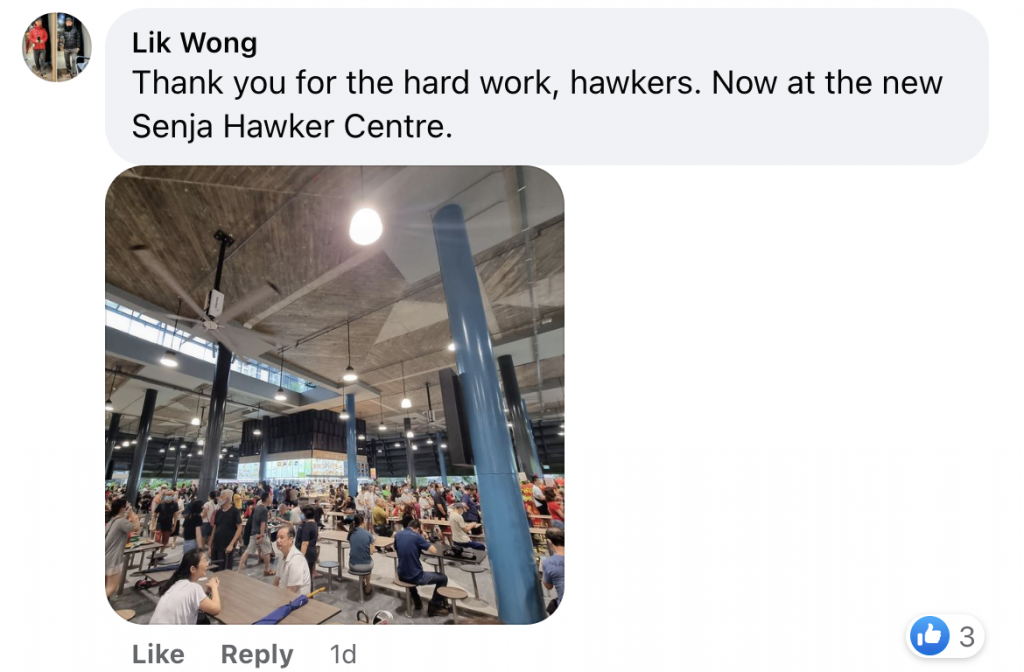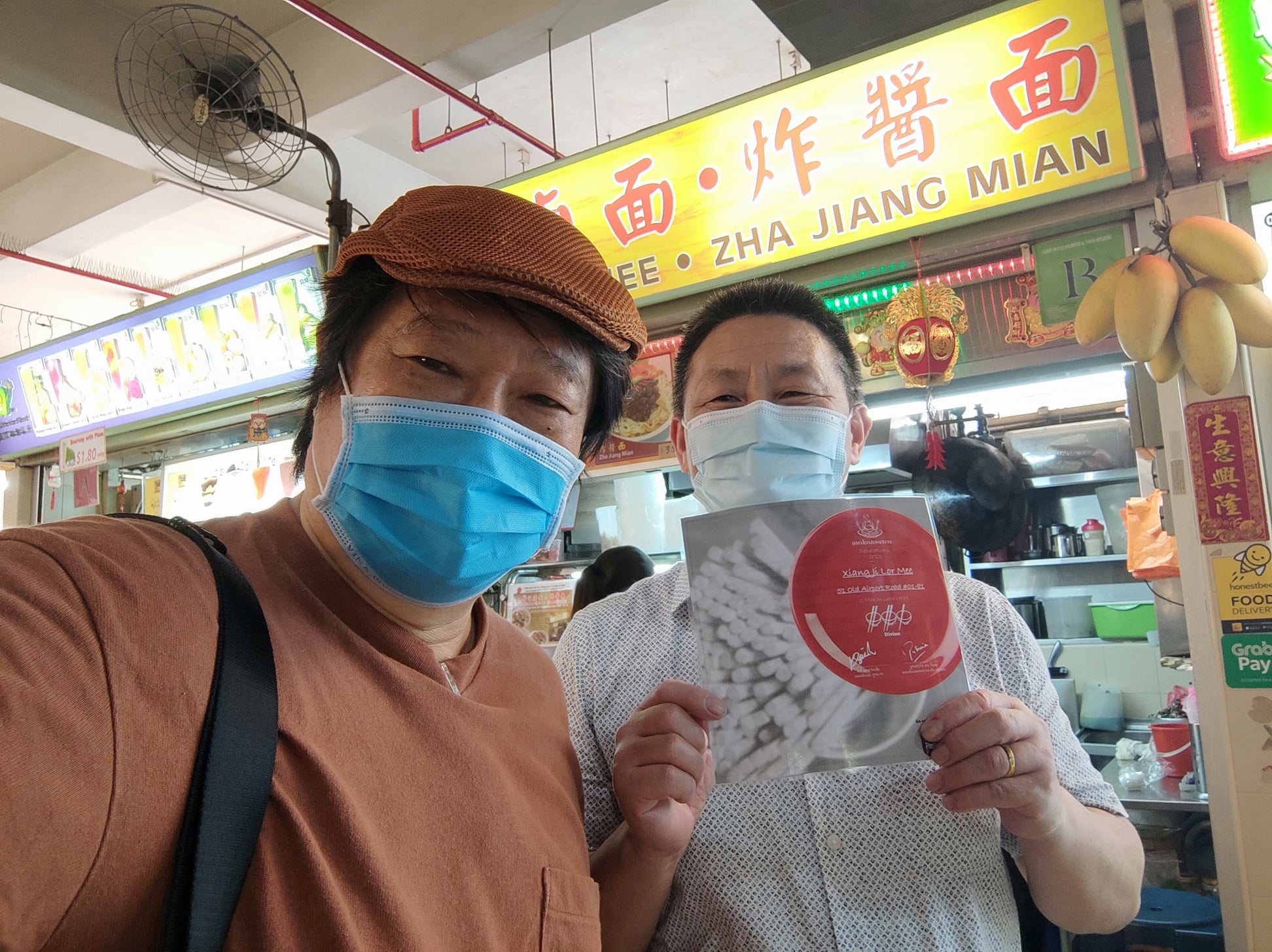SINGAPORE: On Dec 1, the Economist Intelligence Unit (EIU) ranked Singapore as the most expensive city, with New York sharing the number one spot. It is the eighth time in a decade that the Little Red Dot has taken pole position.
Food guru and Makansutra founder Kf Seetoh commented on this in a Facebook post on Sunday (Dec 11). “Check..we are the most expensive city in the world hor, not the richest ah. Now u know why your wallet so empty. Wonder who or what we owe this award to. But we are the world’s cheapest food city fr a developed nation. Count your blessings, thank your favourite hawkers.”


Mr Seetoh has long championed Singapore’s hawkers. He wrote in a much-shared Facebook post in October that the low S$4 price of dishes in Singapore should be newsworthy, not that these cost much more in the newly-opened Urban Hawker in New York.
“The news is not that nasi lemak, chicken rice or cha hae mee is U$D16 to 18, in Mid Town New York. The frontpage news is that it’s $4 in Singapore, one of the richest, most developed and most expensive city in the world..(think million dollar 99yr HDB public leasehold flats and 110k COE).
Hawker food business in Sg is not sustainable, don’t kid yurself.”
Commenters on his Dec 11 post agreed with the points about Singapore’s hawkers that the food guru raised.












On Dec 7, the government also commented on the EIU ranking, saying that it “may not reflect the cost of living for Singaporeans.”
“The WCOL survey looks at the prices of a common set of products and services in the various cities to allow for city-to-city comparisons. As such, its consumption basket may not reflect what Singaporeans usually consume and is therefore not a good gauge of cost of living for Singaporean households.
For instance, its consumption basket includes products such as Burberry-type raincoats and foreign daily newspapers – these are typically not purchased by Singaporean households. A more representative indicator of cost of living in Singapore is the Consumer Price Index (CPI), which measures the average change in the prices of a basket of goods and services commonly purchased by Singaporean households,” it said in a statement.
/TISG
https://theindependent.sg/kf-seetoh-hawker-food-business-in-singapore-not-sustainable-urban-hawker-23-chicken-rice-in-us-should-not-be-the-news/

